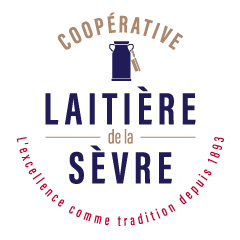OUR FARMERS
They are the connection between the ground and the consumers.
100 local producer farms, including 50 farms producing cow’s milk and 50 farms producing goat’s milk, located close to our two dairies, supply the raw material for our exceptional dairy products.
The producers are responsible for a herd, On the farms , there are many tasks : Maintenance work on equipment, working the fields, harvesting the animal fodder, feeding the herd every day…
Versatile, they’re entirely dedicated to wide-ranging management of the farm and its surrounding pastures in all seasons. These passionate farmers care about the well-being of the animals, ensuring that they’re in good health, and that they have all the necessary comforts (water, feed, straw, etc.).
These family-run farms, firmly rooted in our region, actively contribute to the vitality, maintenance and preservation of the identity of our countryside. They pass on traditions and create a connection between past, present and future.. They play an important role in the local economy and in rural life.
Our responsible farmers also have future-focused visions, committing to reducing greenhouse gas emissions. All our producers adhere to the Milk Production Quality Guidelines, as well as to the national guidelines for good livestock farming practices.
These are committed member producers, who are open to solutions using new technologies to improve their production models, such as the modernisation of livestock buildings in response to global warming. They are on-board with a sustainable approach to producing responsible, high-quality milk and to supplying the best products that the region has to offer.
The region
They are characterised by a defined production areas, essentially located over jurassic limestone covered with clay or alluvium silt.
What is more, this area enjoys good sunshine levels (within the national average), which contributes to creating particular conditions for fodder and a specific quality for products.
The Animals
The goat herds are composed of animals of the Alpine, Saanen and Poitevine breeds. The cow herds are composed of animals of the Prim’Holstein, Normande, Montbéliarde, Jersey, Swedish Red-and-White, and Swiss Brown races and their three-way cross-breeds, or others. All animals are selected through a rigorous process and are regularly inspected by official organisations.
The animals are bedded on clean straw, changed every day, in buildings that respect animal comfort and welfare standards. Milking, births, reproduction and any mishaps that may arise are all managed with constant attention and support.
The farms and their surroundings
The farms have an average of 75 cows and 300 goats for around two farmers on an average surface area of 150 hectares.
All measures must be taken to simultaneously ensure the well-being of the animals and facilitated work organisation. The buildings must blend in with the landscape. Access to the farm is clean, its surroundings are well-maintained with hedgerows around its edges. Fodder and bedding are stored dry, in good conditions, to avoid their deterioration. The silage is stored in a concrete air. Kept away from the buildings, the manure is stored in a special area. Moreover, waste such as plastic containers, tarps, bags, are recycled by a specialised, approved company, using a short circuit to limit CO2 emissions.
The Milking
The milking constitutes a primordial step for the production of a high-quality milk. It therefore requires maximum precautions. The milking equipment is maintained in perfectly clean and operational condition (regular inspection by a qualified agent). Milking is carried out in a calm environment on animals in perfect health. After each milking, all of the equipment is washed and rinsed in clean drinking water.
Feed
To respond to the legitimate requests and preferences of consumers, and based on a precautionary principle, animal-based food and those containing genetically-modified organisms (GMO) are strictly prohibited, since 1997 and are without oil palm. Fodder with grasses, pulses and legumes or pastures are recommended, along with alfalfa, which is a particularity of our region that allows for economies in nitrogen concentrations.
The addition of cereals sourced from the farm or from within the collection area is favoured. Furthermore, the animals must have permanent access to drinking water in troughs that are regularly cleaned.
Geographic proximity: Optimisation of transport
Our cooperative producers are all based close to our two dairies: Echiré & Sèvre & Belle.
This geographic proximity means that we can ensure a high degree of traceability and significant reactivity in our dealings with our producers.
The aim of the Coopérative Laitière de la Sèvre, in line with its Quality guidelines, is to continue to value and promote local producers, their know-how and their passion. This proximity also enables us to maintain the quality of the milk from the farm to the dairy, without having to make long journeys or even change tankers.
Moreover, the impact of transport on the environment is reduced thanks to the limited number of kilometres.



